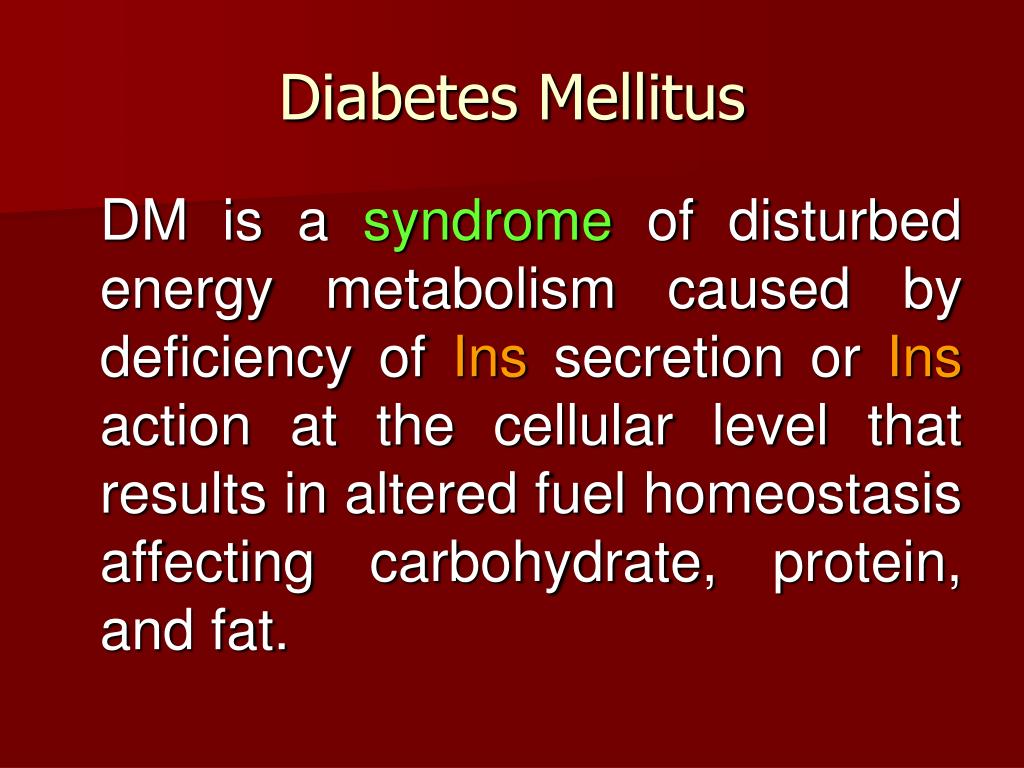Diabetes Mellitus 3.


Diabetesmellitus Type 1 Type 2 And Gestational Diabetes
More 3. diabetes mellitus images. Oct 16, 2019 · what is type 3 diabetes? diabetes mellitus (also called dm or diabetes for short) refers to diabetes mellitus 3. a health condition where your body has difficulty converting sugar to energy.
Diabetes mellitus refers to a group of diseases that affect how your body uses blood sugar (glucose). glucose is vital to your health because it's an important source of energy for the cells that make up your muscles and tissues. it's also your brain's main source of fuel. the underlying cause of diabetes varies by type. but, no matter what type of diabetes you have, it can lead to excess sugar in your blood. too much sugar in your blood can lead to serious health problems. diabetes mellitus 3. chronic diabetes con See more videos for 3. diabetes mellitus. While type 1 and type 2 diabetes are well-defined, the way in which less-common forms of diabetes are classified has changed over the years. there is no single definition of type 3 diabetes. currently, the american diabetes association sets out four different groups of diabetes: type 1 diabetes type 2 diabetes gestational diabetes mellitus (gdm)
Type 3 Diabetes Symptoms Treatment Causes And More
See full list on drugs. com. Diabetes mellitus (dm), commonly known as diabetes mellitus 3. diabetes, is a group of metabolic disorders characterized by a high blood sugar level over a prolonged period of time. symptoms often include frequent urination, increased thirst, and increased appetite.
Long-term complications of diabetes develop gradually. the longer you have diabetes — and the less controlled your blood sugar — the higher the risk of complications. eventually, diabetes complications may be disabling or even life-threatening. possible complications include: 1. cardiovascular disease. diabetes dramatically increases the risk of various cardiovascular problems, including coronary artery disease with chest pain (angina), heart attack, stroke and narrowing of arteries (atherosc Type 3 diabetes is a proposed term to describe the interlinked association between type 1 and type 2 diabetes, and alzheimer's disease. this term is used to look into the triggers of alzheimer's disease in people with diabetes. the symptoms follow the same progression as alzheimer's disease, beginning with difficulty remembering recent events and as the disease progresses, linguistic problems, mood and behavioural swings and motivational loss can also be apparent. the progression from diabetes t. Diabetesmellitus refers to a group of diseases that affect how your body uses blood sugar (glucose). glucose is vital to your health because it's an important source of energy for the cells that make up your muscles and tissues. it's also your brain's main source of fuel.
2) defend ronnie smith (2) denver (21) diabetes (3) diabetes mellitus (9) diabetes mellitus (disease or medical condition) (3) diabetic (3) diabetic foot ulcer (disease or medical Diabetes mellitus, also called diabetes, is a term for several conditions involving how your body turns food into energy. when you eat a carbohydrate, your body turns it into a sugar called glucose. Diabetes mellitus is a disease that prevents your body from properly using the energy from the food you eat. diabetes occurs in one of the following situations: the pancreas (an organ behind your stomach) produces little insulin or no insulin at diabetes mellitus 3. all. insulin is a naturally occurring hormone, produced by the beta cells of the pancreas, which.
Type 1 diabetes can't be prevented. however, the same healthy lifestyle choices that help treat prediabetes, type 2 diabetes and gestational diabetes can also help prevent them: 1. eat healthy foods. choose foods lower in fat and calories and higher in fiber. focus on fruits, vegetables and whole grains. strive for variety to prevent boredom. 2. get more physical activity. aim for 30 minutes of moderate physical activity a day. take a brisk daily walk. ride your bike. swim laps. if you can't The symptoms of diabetes include: increased thirst. diabetes mellitus 3. increased hunger (especially after eating). dry mouth. frequent urination. unexplained weight los s (even though you are eating and feel hungry). While type 1 and type 2 diabetes are well-defined, the way in which less-common forms of diabetes are classified has changed over the years. there is no single definition of type 3 diabetes. currently, the american diabetes association sets out four different groups of diabetes: type 1 diabetes; type 2 diabetes; gestational diabetes mellitus (gdm). Type 2 diabetes is a chronic disease. it is characterized by high levels of sugar in the blood. type 2 diabetes is also called type 2 diabetes mellitus and adult-onset diabetes. that's because it used to start almost always in middleand late-adulthood. however, more and more children and teens are developing this condition. type 2 diabetes is much more common than type 1 diabetes, and is really a different disease. but it shares with type 1 diabetes high blood sugar levels, and the complica

Possible complications include: cardiovascular disease. diabetes dramatically increases the risk of various cardiovascular problems, including coronary nerve damage (neuropathy). excess sugar can injure the walls of the tiny blood vessels (capillaries) that nourish your kidney damage. Diabetesmellitus and diabetes insipidus share the first word of their name and some of the same symptoms. but that’s where the similarities end. these two diseases aren’t related. they cause. If you have diabetes, see your doctor regularly. people with high blood sugar levels have a higher risk of dehydration. contact your doctor immediately if you develop vomiting or diarrhea and are not able to drink enough fluids. monitor your blood sugar as advised by your health care team. report any significant deviations in blood sugar levels.

Tidak ada komentar untuk "Diabetes Mellitus 3."
Posting Komentar